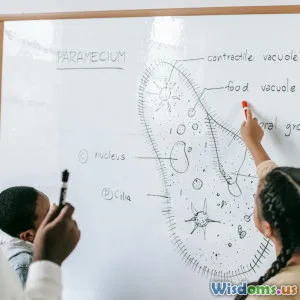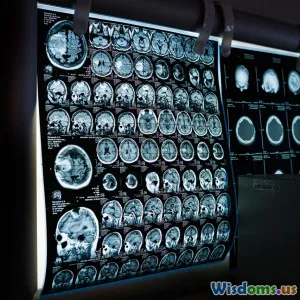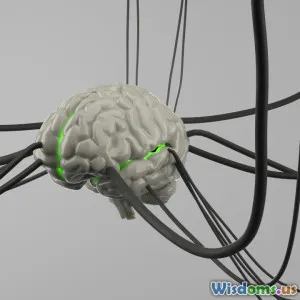
What Happens in the Brain When You Master a New Skill Fast
11 min read Explore the brain's rapid transformation during fast skill mastery and uncover neuroscience-backed insights on how learning accelerates mental wiring. (0 Reviews)
What Happens in the Brain When You Master a New Skill Fast
Learning something new is often a challenging, slow process—but sometimes, individuals seem to skyrocket to mastery at a remarkable pace. What exactly happens in the brain during these bursts of rapid skill acquisition? Recent advances in neuroscience have started unraveling the underlying mechanisms of fast learning, revealing a fascinating interplay between brain plasticity, structural adaptation, and cognitive strategies that enable the swift mastery of new skills.
Introduction: The Mystery of Rapid Skill Mastery
Have you ever wondered why some people seem to pick up new skills—whether learning a language, mastering a musical instrument, or excelling at a sport—much faster than others? This phenomenon, often attributed to talent or innate ability, actually hinges on tangible, measurable neurological changes. Fast learners trigger and exploit the brain's inherent flexibility to rewire itself efficiently, harnessing neural circuits and metabolic resources that accelerate the learning process.
In this article, we'll explore the fascinating science behind what happens in your brain when you master a skill quickly. From the rewiring of synaptic connections to the insulation boosting neuron signal speeds, we'll reveal how these processes work and how you can harness them to enhance your own learning journey.
The Brain's Learning Blueprint: Neuroplasticity
The Dynamic Nature of the Brain
Central to mastering a new skill rapidly is neuroplasticity—the brain’s ability to rearrange, strengthen, or prune neural connections in response to new experiences and learning demands. Neuroplasticity enables both the formation of novel skills and the optimization of pre-existing ones. When you practice a skill intensively, your brain reinforces circuits associated with that skill, making execution faster and more accurate over time.
Synaptic Strengthening
At a microscopic level, learning depends on synapses, the connections between neurons. Psychologist Donald Hebb famously summarized the process as “neurons that fire together wire together.” As you practice, synaptic connections relevant to the skill intensify through long-term potentiation (LTP), increasing the efficiency and speed of neural communication. In a study published in Nature Neuroscience, young adults learning a new finger motor sequence demonstrated increased activity and connectivity in the motor cortex within days, reflecting synaptic strengthening.
Pruning Ineffective Connections
Interestingly, the brain also eliminates redundant or less-used synapses—a process called synaptic pruning—to optimize network efficiency. This 'neural pruning' helps focus your brain's resources on the circuits that matter most for the skill you're acquiring, contributing to faster processing and improved performance.
Myelination: The Brain's Insulating Change
What Is Myelin and Why Does It Matter?
Beyond synapses, another crucial factor in rapid skill mastery is myelination. Myelin is a fatty insulating layer that wraps around nerve fibers (axons), analogous to insulation on electrical wires. This insulation dramatically increases the speed at which electrical impulses travel along neurons, enabling faster and more synchronized brain signaling.
How Skill Acquisition Boosts Myelination
Recent MRI studies have shown that learning a new motor or cognitive skill induces myelin changes in relevant brain regions. For example, researchers at the University of Oslo observed increased myelination in participants who practiced a juggling routine over six weeks. These changes correlate with quicker reaction times and more fluid performance.
Importantly, myelination isn't just for early development—it is highly dynamic and continues into adulthood, especially with concentrated practice. This flexibility helps explain how adults can still master complex skills rapidly despite the common belief that brain plasticity wanes with age.
The Role of Efficient Neural Networks
Brain Region Cooperation
Fast mastery doesn't just depend on isolated brain regions—it thrives on efficient communication between multiple areas. For learning complex skills, coordination between the motor cortex, prefrontal cortex (responsible for planning and decision making), basal ganglia (habit formation), and cerebellum (movement precision) is essential.
Functional Connectivity Enhances Learning Speed
Studies utilizing functional MRI (fMRI) have shown that individuals who learn faster display stronger connectivity between these regions during training. Such synchronized activity reduces cognitive load and error rates, accelerating performance improvements. For instance, dynamic integration between the hippocampus (involved in memory formation) and neocortex supports rapid encoding of new information necessary for skill refinement.
Cognitive and Behavioral Factors Accelerating Brain Adaptations
Focused, Deliberate Practice
Neuroscientist Anders Ericsson emphasized 'deliberate practice'—practice with focused attention on improving specific aspects of a skill—as crucial in speeding up mastery. Concentrated effort enhances the brain's plasticity mechanisms, ensuring that synaptic strengthening and myelination target the right neural circuits.
Sleep and Memory Consolidation
Sleep plays an often underestimated but pivotal role in rapid learning. During deep sleep phases, the brain consolidates new memories and skill-related neural adaptations. A study published in Science demonstrated that participants who had a full night’s sleep after training a finger-tapping sequence showed significant performance improvements the next day compared to sleep-deprived peers.
Motivation and Dopamine Release
Neurologically, motivation drives learning by modulating dopamine release—a neurotransmitter crucial for reward and plasticity. Higher motivation levels increase dopamine availability, which strengthens learning-related synapses and facilitates new skill acquisition. Athletes and musicians often note that enthusiasm and goal orientation can accelerate their mastery leaps.
Real-World Examples of Fast Skill Mastery
The Case of Speed Learning Polyglots
Polyglots like Steve Kaufmann and Alexander Argüelles often report acquiring new languages at a breakneck pace. Neuroimaging studies suggest their brains have highly developed language networks with robust connectivity and enhanced myelination in relevant regions like Broca's and Wernicke's areas. Their habitual immersive practices and motivation further potentiate rapid neural adaptations.
Athletic Skill Learning
Elite athletes exemplify rapid motor skill mastery. For example, internationally renowned gymnast Simone Biles began displaying phenomenal abilities early due to intense, focused training that likely accelerated synaptic efficiency and myelin development in motor and cerebellar regions.
Strategies to Harness Your Brain's Learning Power
1. Engage in Deliberate Practice
Break down the skill into focused components. Use feedback loops to correct errors. Concentrate energy strategically rather than relying on sheer repetition.
2. Prioritize Rest and Sleep
Ensure adequate, quality sleep immediately following practice sessions to facilitate memory consolidation and neural adaptations.
3. Optimize Motivation
Set clear, achievable goals to trigger dopamine-driven plasticity and maintain high engagement.
4. Use Multimodal Learning Approaches
Combine visual, auditory, and kinesthetic learning to activate multiple brain regions and strengthen connectivity.
5. Manage Cognitive Load
Avoid multitasking during practice to enable maximal synaptic strengthening and focused neural remodeling.
Conclusion: Your Brain's Remarkable Capacity for Rapid Transformation
Mastering a new skill quickly is not just a testament to innate talent—it is an orchestrated neurological symphony where neuroplasticity, myelination, network efficiency, and motivational neurotransmitters work in concert. Understanding these brain mechanisms demystifies rapid learning and arms you with evidence-based strategies to accelerate your own skill acquisition journey.
Embracing focused practice, sufficient rest, and maintaining motivation can tap into your brain’s incredible adaptability, making fast mastery within reach for anyone willing to engage fully. So the next time you awe at prodigious skill mastery, remember: beneath the surface lies a marvel of brain science—your brain lighting up new pathways that empower you to learn, grow, and excel at an extraordinary pace.
References:
- May, A. (2011). Experience-dependent structural plasticity in the adult human brain. Trends in Cognitive Sciences, 15(10), 475-482.
- Scholz, J., Klein, M.C., Behrens, T.E., & Johansen-Berg, H. (2009). Training induces changes in white-matter architecture. Nature Neuroscience, 12(11), 1370–1371.
- Walker, M.P., & Stickgold, R. (2006). Sleep, memory, and plasticity. Annual Review of Psychology, 57, 139–166.
- Ericsson, K.A., Krampe, R.T., & Tesch-Römer, C. (1993). The role of deliberate practice in the acquisition of expert performance. Psychological Review, 100(3), 363–406.
- Zatorre, R.J., Fields, R.D., & Johansen-Berg, H. (2012). Plasticity in gray and white: neuroimaging changes in brain structure during learning. Nature Neuroscience, 15(4), 528–536.
Rate the Post
User Reviews
Other posts in Cognitive Psychology
Popular Posts















